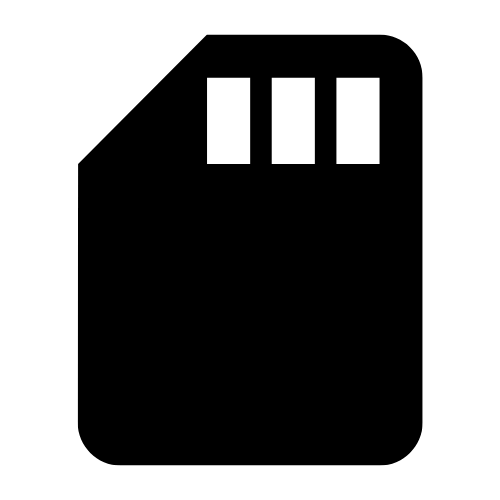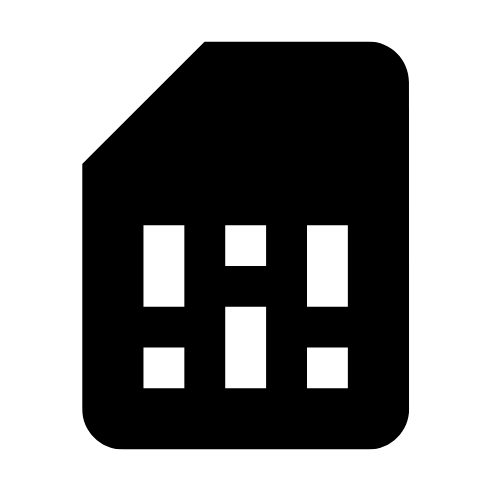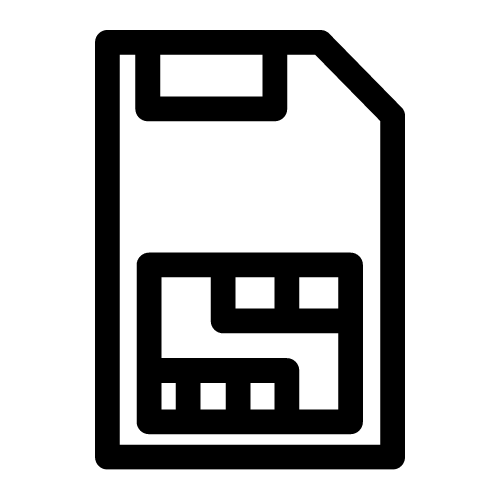How are RFID tags built?
They have two elements:
Integrated circuit (chip)
It is the heart of the RFID tag and all information is stored in it. Some chips can store more information than others. Most UHF tags comply with the Class 1 Generation 2 (ISO 18000-6C) standard and use 96 bits of EPC (Electronic Product Code) memory, which is enough space to store 24 hexadecimal characters (0-9, A-F). However, some tags are more expensive because they have extended user memory to store more information.
Antenna
Its size affects the operating range of the RFID tag. The small size tag has a small antenna, which gives a shorter read range. Larger tags with larger antennas will have a greater read range. In addition, the range of the antenna is greatly influenced by the environment that surrounds it. Water and metal respectively absorb and reflect the radio wave and significantly reduce the effectiveness of RFID systems. As far back as 1830, Faraday discovered that high-frequency radio waves were absorbed by metals. Water, because it is a radio wave conductor, also interferes with the operation of RFID systems.
Forms of RFID tags
Fortunately, there are tags available on the market dedicated to metal applications. Such tags in their design have the chip and antenna away from metal elements by using a spacer. An example would be an “on metal” label. There are also tags that, after sticking to metal, can operate at much greater ranges than traditional ones. In this variant, the metal to which the RFID tag is attached acts as an antenna.
Speaking of the form of an RFID tag, we mean its physical form. Depending on the application, RFID tags come in various shapes and sizes, can be applied to a label or placed in a protective casing.

Inlay

Label

Hard tags
Types of RFID tags
Depending on how the RFID tags are powered, we distinguish passive and active tags.
Passive RFID tags do not have a built-in power supply. The energy to activate the chip comes only from the wave emitted by the RFID reader. They are much cheaper than active markers and generally have a smaller range (supplied by IBCS Poland).
Active RFID tags are battery powered and actively transmitting a signal. They have a longer reading range and are more expensive due to the cost of the battery and transmitter.
Types of memory in RFID tags
RFID tags operating in the UHF frequency band in accordance with the EPC Global Class 1 Gen 2 standard have 4 types of memory:
- EPC (Electronic Product Code Memory),
- User Memory,
- TID (Tag Identification Memory),
- Reserved Memory.
The EPC and User memory banks are the banks that “transfer” our information. The other two banks hold control data. User memory, i.e. User memory, is a bank that does not have to be present in the tag structure. This memory is optional and is used in tags where the user requires additional space to store information, e.g. when the EPC bank is too small for him.
EPC Memory stores the EPC code or electronic product code. It has a minimum of 96 bits of writable memory. There are tags that have the ability to allocate more bits to EPC memory. Many of them have 128-bit memory, there are also those that have even 496-bit EPC memory. The EPC code from this bank is most often used as a unique tag identifier. This is the first writable bank in the RFID tag.
User Memory – used if the user needs more memory than available in the EPC bank. Usually it is 512 bit, but there are also RFID tags that have 4k or even 8kB. This is the second writable bank in the RFID tag.
TID Memory is only used to store a unique identification number assigned by the manufacturer that produced the tag. This part of the memory cannot be changed.
Reserved Memory – a memory bank that stores the access password and the kill password. Each password has 32 bits. The destroy password permanently deactivates the tag (very rarely used) and the access password is set to lock and unlock the tag’s write capabilities. Most users do not use this memory area unless their applications contain sensitive data.
How to choose RFID tags?
When choosing RFID tags, the following should be considered:
-
just as with readers and antennas, here too, an RFID tag should be selected in accordance with the frequency that is legally allowed in a given geographical area. In addition, remember that both the reader and the RFID tag should be tuned to the same band. which will allow them to communicate.
RFID tags for metal
Metal surfaces will reflect the wave emitted by the RFID reader and cause interference that standard RFID tags cannot cope with. In order to overcome this obstacle, tag manufacturers have created special RFID tags that use an additional layer of material separating the RFID antenna from the metal object on which the tag is mounted.
It is common to use RFID tags to tag metal surgical instruments, industrial tools, and IT assets such as laptops and servers. Metal RFID tags are also used in industry and production, where metal semi-finished products are identified.
Due to the fact that many metal objects marked with RFID are exposed to demanding external conditions, the tags themselves must also be resistant to them. There are RFID tags on the market that can withstand high temperatures, are impact resistant, etc.
